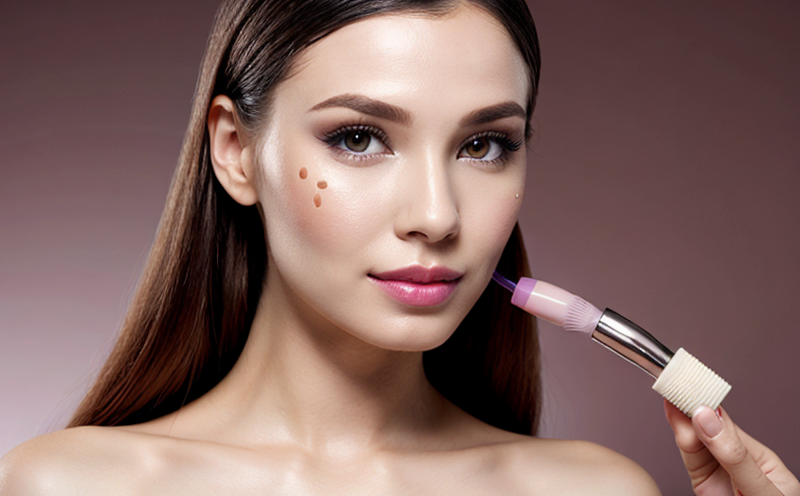In Vitro Respiratory Toxicity Testing of Cosmetic Aerosols
Respiratory toxicity testing is a critical step in ensuring the safety and efficacy of cosmetic products. In-vitro methods, particularly those involving alveolar epithelial cells and lung fibroblasts, have become increasingly important for evaluating the respiratory toxicity of cosmetics, especially aerosols.
Aerosolized products are designed to deliver their active ingredients directly into the respiratory tract. This mode of delivery can make them more effective but also increases the risk of potential inhalation hazards. The in-vitro testing of cosmetic aerosols aims to assess whether these products may cause adverse effects on lung cells and tissues, thereby providing a safer alternative to traditional animal-based toxicology tests.
The International Organization for Standardization (ISO) specifies that respiratory toxicity should be evaluated using methods like the ISO 10993-11 standard. This standard outlines procedures for in-vitro testing of materials and devices intended for contact with human skin, mucous membranes, or other surfaces. For cosmetic aerosols specifically, a combination of cell cultures and advanced biophysical techniques is used to simulate the interaction between the product and lung tissue.
The testing process typically involves exposing cultured alveolar epithelial cells to the aerosolized formulation under controlled conditions. Researchers then monitor changes in cellular morphology, viability, and functionality as indicators of potential toxicity. Lung fibroblasts may also be used to assess long-term effects on connective tissue.
One key advantage of this approach is its reduced reliance on animal testing (3R principles: replacement, reduction, refinement). By using human-derived cells in a controlled laboratory environment, researchers can better predict the real-world impact of cosmetic aerosols without causing harm to animals. Additionally, the use of alternative methods aligns with international regulatory frameworks that encourage more humane and efficient testing protocols.
The methodology is further validated by comparing results against historical data obtained from live animal studies where applicable. This dual validation strengthens confidence in the accuracy and reliability of the test outcomes. Furthermore, it allows for faster turnaround times compared to conventional approaches, which can take months or even years to complete depending on regulatory requirements.
Another benefit is that this testing method supports the continuous improvement cycle within cosmetic manufacturing processes by providing early-stage feedback about potential issues with new formulations or production methods before they reach market. This proactive approach helps companies maintain high standards of product safety while staying competitive in an ever-evolving industry landscape.
Benefits
- Reduction in Animal Testing: Utilizing alternative methods reduces the need for animal testing, which aligns with ethical considerations and regulatory trends towards more humane practices.
- Improved Accuracy: By using human-derived cells, the results obtained are more representative of real-world conditions than those from animal models alone.
- Faster Turnaround Times: Alternative methods can provide quicker feedback on product safety compared to traditional approaches, enabling faster development cycles and market launches.
- Ethical Considerations: Adopting alternative testing strategies demonstrates a commitment to ethical business practices and enhances corporate reputation among consumers who prioritize sustainability and animal welfare.
Quality and Reliability Assurance
The quality assurance process for in-vitro respiratory toxicity testing of cosmetic aerosols involves several key steps to ensure accurate, reproducible results. First, it is essential that all reagents used are of high purity and stability, as impurities could introduce variability into the experimental outcome.
Standard operating procedures (SOPs) must be strictly followed throughout the entire testing process to minimize human error. These SOPs should cover everything from initial sample preparation through final analysis. Regular calibration checks of equipment are necessary to maintain precision and accuracy over time.
Data integrity is maintained by implementing robust data management systems that track every aspect of the experiment, including environmental factors such as temperature and humidity during testing. This ensures consistency across multiple trials conducted at different times or locations.
Inter-laboratory comparisons play a crucial role in ensuring consistent results between various facilities performing similar tests. Participating labs can exchange protocols and share best practices to improve overall performance standards within the industry.
Environmental and Sustainability Contributions
- Reduction in Animal Testing: By replacing animal testing with alternative methods, the industry can significantly decrease its carbon footprint associated with vivisection.
- Eco-Friendly Laboratory Practices: Implementing sustainable laboratory practices such as proper waste disposal and energy-efficient equipment contributes further to environmental benefits.
- Resource Efficiency: The use of alternative testing methods allows for more efficient use of resources, including water and electricity, compared to traditional animal testing processes.





